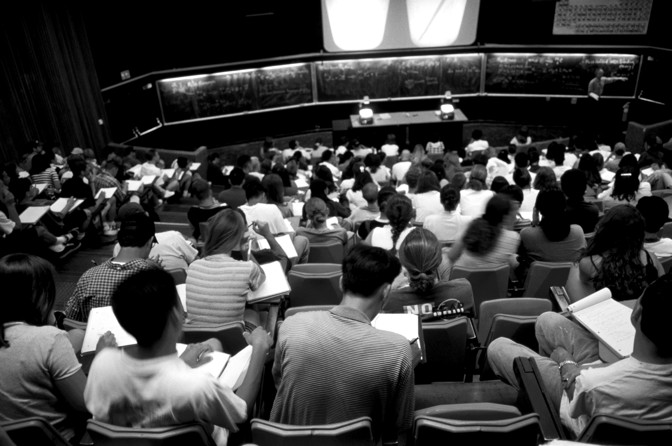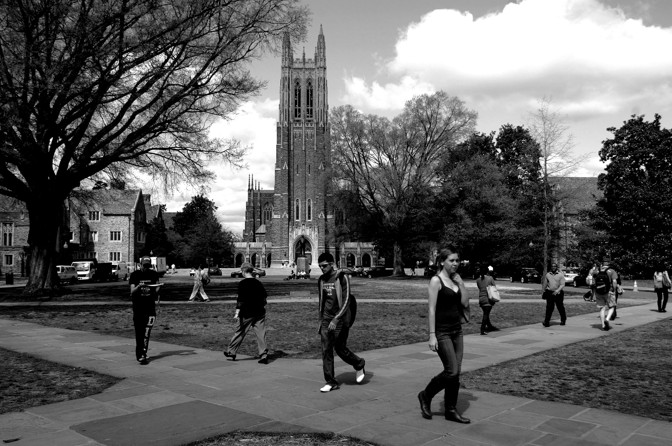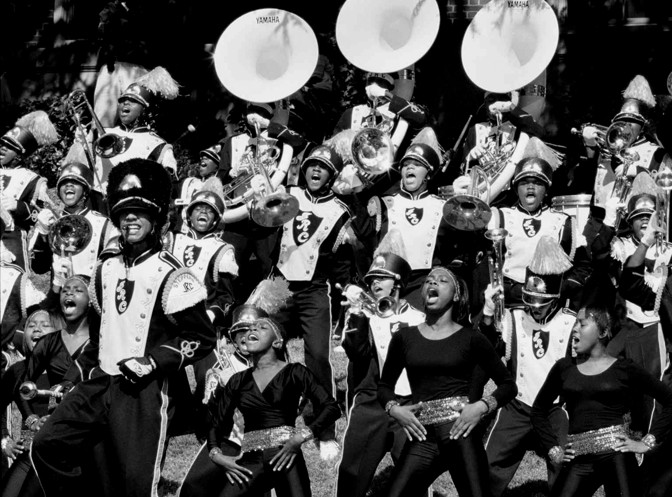American colleges botched the pandemic from the very start. Caught off guard in the spring, most of them sent everyone home in a panic, in some cases evicting students who had nowhere else to go. School leaders hemmed and hawed all summer about what to do next and how to do it. In the end, most schools reopened their campuses for the fall, and when students returned, they brought the coronavirus along with them. Come Labor Day, 19 of the nation’s 25 worst outbreaks were in college towns, including the University of Mississippi in Oxford, Iowa State in Ames, and the University of Georgia in Athens. By early October, the White House Coronavirus Task Force estimated that as many as 20 percent of all Georgia college students might have become infected.
Who’s to blame for the turmoil? College leaders desperate to enroll students or risk financial collapse; students, feeling young and invincible, who were bound to be dumb and throw parties; red-state governments and boards that pressured universities to reopen.
But ordinary Americans also bear responsibility. They didn’t just want classes to resume in person—they wanted campuses to return to normal. By one measure, more than two-thirds of students wanted to head back to their colleges. Even parents deeply worried about the safety of their kids still packed bags and road-tripped across the country to drop them off at school. When some colleges moved to Zoom, students and parents revolted. More than 100 colleges, both private (Brown, Duke) and public (Rutgers, North Carolina), have been sued for tuition refunds. You can understand why. It costs almost $60,000 per year to attend Brown, and that’s before room, board, books, and fees.
But what did families think they were paying for? Classes are still happening, and degrees will still be conferred. Parents and students are miffed because they don’t really buy teaching when they pay tuition. Instead, they get something more abstract: the college experience. Some of that experience involves education—the seminar discussion in a facsimile of a medieval monastery, the cram session under the vaulted ceiling of a library, the brisk, after-class chat with a professor across a grassy quad. But most of it doesn’t, especially the stuff that can’t be done from a distance, such as moving away from home for the first time, swilling booze at a house party, touring houses during sorority rush, applying face paint for a football game, decorating the cold, cinder-block walls of a new dorm room.
The pandemic is changing lots of things, some forever. Office work seems to be on the decline, as companies abandon pricey real estate and the nuisance of commutes. Online grocery shopping, once a luxury, may finally be deposing the supermarket’s century-long reign. The pandemic has upended air travel, dining out, working out, and weddings. But even though the coronavirus has massively disrupted American higher education, many colleges are already settling back into their usual routines: move-in day, rush, homecoming, and all the rest.
[Read: The risk universities can’t not take]
That shocking stability is exposing a long-standing disconnect: Without the college experience, a college education alone seems insufficient. Quietly, higher education was always an excuse to justify the college lifestyle. But the pandemic has revealed that university life is far more embedded in the American idea than anyone thought. America is deeply committed to the dream of attending college. It’s far less interested in the education for which students supposedly attend.

Students do go to school for the schooling, of course. Colleges hold classes, host majors, and award degrees. Getting a college degree is now one of the only paths to a middle-class life, training graduates for a particular career and, on average, doubling their median income. But that’s just a small part of colleges’ purpose. In the United States, higher education offers a fantasy for how kids should grow up: by competing for admission to a rarefied place, which erects a safe cocoon that facilitates debauchery and self-discovery, out of which an adult emerges. The process—not just the result, a degree—offers access to opportunity, camaraderie, and even matrimony. Partying, drinking, sex, clubs, fraternities: These rites of passage became an American birthright.
Not everyone gets or even wants a college experience. At least 35 percent of American students attend two-year institutions such as junior and community colleges that don’t promise a coming-of-age experience. Likewise, some state schools cater to commuter students, working students, and students outside traditional college age, for whom a college experience is either a luxury or a memory. That’s what made it easy for the California State University system—all 23 campuses, serving almost half a million students total—to move fall classes online way back in May.
By the time the pandemic arrived, residential colleges had been selling the college experience, along with a side of education, for decades. They had been promulgating it as a cultural aspiration for much longer. An education is useful and even beneficial. But it’s not what American colleges are built for, and it never has been.
When Western universities got their start in medieval Europe, they were integrated into major cities, such as Paris, Berlin, and Milan. England was an exception. Its oldest colleges, Oxford and Cambridge, were nestled into the bucolic countryside. When Harvard became the first college in the future United States, it adopted the English notion of a campus as a place apart—and became the prototype for every U.S. undergraduate college that succeeded it. The school was designed around a quadrangle (an Oxford-Cambridge invention) that literally contains collegiate life, separated from the outside but connected within.
Read: What did college leaders think was going to happen?]
A common thread unites these residential colleges: Their campuses live in tension with their communities because American colleges and universities have always sought isolation rather than integration. College is a place like Las Vegas is a place: a host for the lifestyle it provides. Even schools in the middle of big cities, such as Rice University in Houston or the University of Southern California in Los Angeles, almost always offer deliberate separation from their urban environments. These places see and sell themselves as hamlets decoupled from the rest of the world. They need to maintain that myth in order to provide the college experience in undiluted form—even while they also host massive flows of people, ideas, and capital in and out of their gates.
Even for people who might never attend college, a proliferation of isolated American campuses helped make college an ambition. Relatively small populations went to college before the 1950s, but the popular fascination with collegiate life was widespread. “It was showcased, kind of like looking at an aquarium,” says John Thelin, a University of Kentucky historian who studies higher education. The college way became a lifestyle. “Every magazine would have a back-to-college issue” covering style, fashion, and slang. Joe College and Betty Co-ed became archetypes, young and carefree models of American spirit and potential. Going to college, Thelin writes in his book A History of American Higher Education, “was a rite of passage into the prestige of the American upper-middle class.”
Sports helped establish the traditions of that rite of passage, such as fight son
gs and homecoming. Adults can’t attend school forever, but they can root for their alma mater in perpetuity. Land-grant-college football teams, including the Texas A&M Aggies and the LSU Tigers, also helped fill a gap in pro sports; until 1960, there were no NFL teams south of St. Louis. For many, sports make college understandable and appealing in the first place.
As more people enrolled in college during the mid-20th century, becoming a student escalated from an upper-middle-class to a middle-class aspiration. State schools had made higher ed accessible. The G.I. Bill and Pell grants made it affordable. The college experience became permanent through alumni, as children and grandchildren were encouraged to dream of their parents’ alma mater, major, or Greek house. And schools encouraged this, eager for the attention, the donations, and the built-in marketing of their legacy.
The entire structure of American family life became oriented toward college—school districts drove home-buying decisions; teen schedules swelled with SAT prep and extracurriculars. Adult life became anchored to college, too, by its tendency to matchmake marriages, through jobs secured from one’s course of study, via local or regional settlement after graduation, by the legacy of collegiate-sports fandom, and from the lifelong shadow of the alma mater as a crucible of adulthood. Americans perceive college as a shared cultural experience because it is one. You might graduate after four years, but in a way you never leave—even if you didn’t attend in the first place.

But overnight, the pandemic threatened what it means to attend college. Colleges and universities knew that bringing students across the country to campus during a deadly pandemic was a terribly risky prospect. But most of them did it anyway, largely in the interest of providing the cherished college experience, even if most or all classes took place online. Schools tried to place restrictions on what students could do: spreading them out in dorms, installing useless plexiglass barriers on lecterns, prohibiting parties, and canceling campus events. (But not football. All ten Division 1 conferences are playing this fall.)
And so move-in day took place, the masks came off, the football games proceeded, and college kids started partying right away. Some schools kept the virus in check, but at others, it spread fast. Almost a third of COVID-19 tests at the University of North Carolina at Chapel Hill came back positive soon after the semester began. An outbreak at Notre Dame, one of the first campuses to commit to a return to campus, temporarily pushed instruction online almost immediately after classes had started. The spread also justified an extreme curtailment of campus life. Schools implicitly promised the college experience to get students back, but when students arrived they ruined things by being there and partaking of it. Students were confined to their dorms, save for eating and going to classes or work. Faced with college as a prison, some students have rebelled, and some schools have retaliated. In September, Northeastern University expelled 11 students for hosting a party in violation of COVID-safety policies, because it put even a modified college experience at risk.
From off-campus, some outsiders objected on the grounds that not partying is also a threat to that experience. Florida Governor Ron DeSantis threatened to introduce a college-student bill of rights that would protect students against draconian responses like Northeastern’s. “That’s what college kids do,” he said of partying students, casting the pandemic as a battle for their fate. He wasn’t alone. The Trump administration leaned on state governments to reopen colleges. Georgia Governor Brian Kemp dangled the University of Georgia’s football season as a carrot for public-health compliance. Connecticut Governor Ned Lamont even wanted Yale to reopen.
[Read: Colleges are getting ready to blame their students]
It might seem ludicrous to sacrifice public health to preserve indiscretion as an ideal of college life, but that life has never aspired toward well-being in the first place. It’s a deliberate feature of college, not a side effect. “Youthful indiscretions were tolerated and even encouraged as part of the process of upward social mobility that the college facilitated,” Thelin writes.
The pandemic made some parts of the traditional college experience, such as parties and close-quarters socialization, dangerous. But campus life thrives on dangerous behavior in the first place. College creates a bubble that upends responsibility to the outside world. Students acted recklessly toward the virus not because they are necessarily careless or juvenile, but because college promises them a place apart, where ordinary rules don’t apply. For example, after public-health officials in Boulder, Colorado banned gatherings of 18-to-22-year-olds in an effort to control the spread outside the college community, students only felt more entitled to gather in groups. The pandemic’s restrictions were almost guaranteed to inspire college kids to organize parties that reject the structures of adult authority.

As the leaves turn and fall arrives in earnest, colleges and universities are starting to understand what measures are needed to prevent outbreaks on their campuses and in their communities. The answer isn’t surprising: frequent, widespread testing for people with and without symptoms, backed by contact tracing of infected students. As of mid-October, the University of Georgia, for example, had reported more than 3,800 cases since March. But by comparison, at Georgia Tech, where I teach, created a high-volume surveillance testing program, and the institute has reported about 65 percent fewer cases per capita. Other schools, such as Cornell, have also used surveillance testing to great effect. But there are over 5,000 colleges and universities in America, and not all of them can respond like an elite school can. The drive to open campuses at all costs during a pandemic shows how deeply higher education has sunk its claws into the American imagination. We’ve built a large part of our society around the experience of college, but precious little around the education it provides.
That’s why college won’t go the way of white-collar offices or gyms or grocery shopping, no matter what some prognosticators have predicted amid the catastrophe. The NYU business professor Scott Galloway has contended that most colleges will die out, and the survivors will partner with big tech companies such as Apple and Google to take over the sector. John Warner, a higher-ed critic, hopes for an opposite future of sustainable, state-funded education. In a new book, he argues that colleges are under threat because “they are not oriented around the mission of teaching and learning, but instead exist to recruit students, enroll students, collect tuition, and hold class.”
[Read: The future of college looks like the future of retail]
Both diagnoses mistake college’s secondary purpose, education, for its primary one, collegiate life. The internet’s overthrow of college has been foretold for more than a decade now, long before the pandemic moved classes
to Zoom. But instead, online learning has mostly become a way to spare commuter students the travel or to attract mid-career students to professional programs—neither of which ever tried to deliver the college experience of American myth. Appealing to educational renewal, meanwhile, overlooks the hard truth that the collegiate way never lost its way; teaching and learning’s central role was always somewhat mythical, no matter how much critics such as Warner might wish things used to be otherwise.
The pandemic has made college frail, but it has strengthened Americans’ awareness of their attachment to the college experience. It has shown the whole nation, all at once, how invested they are in going away to school or dreaming about doing so. Facing that revelation might be the most important outcome of the pandemic for higher ed: An education may take place at college, but that’s not what colleges principally provide. Higher education survived a civil war, two world wars, the Great Depression, and the 1918 Spanish flu, the worst pandemic the U.S. has ever faced. American colleges will outlast this crisis, too, whether or not they are safe, whether or not they are affordable, and whether or not you or your children actually attend them. The pandemic offered an invitation to construe college as an education alone, because it was too dangerous to embrace it as an experience. Nobody was interested. They probably never will be.

